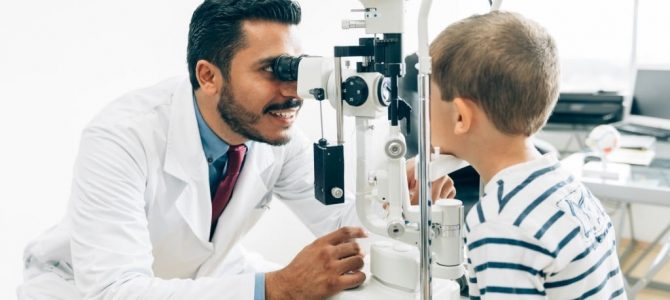Locate a Neurologist in Andalusia: Specialized Clinics and Treatment Providers
Locate a Neurologist in Andalusia: Specialized Clinics and Treatment Providers
Blog Article
The Pros and Disadvantages of Various Refractive Surgical Procedures for Enhanced Eyecare

LASIK Surgical Procedure
LASIK surgery is a typically executed refractive treatment that aims to fix vision problems such as farsightedness, astigmatism, and nearsightedness. Throughout the treatment, a slim flap is produced on the cornea, and a laser is used to reshape the underlying tissue, dealing with the refractive mistake.
Among the main benefits of LASIK surgical procedure is the rapid enhancement in vision experienced by numerous patients. Most people observe a substantial improvement in their vision shortly after the treatment, with marginal downtime needed for healing. Furthermore, LASIK is understood for its high success price and low occurrence of problems when done by knowledgeable specialists. Nevertheless, like any type of procedure, LASIK also lugs some threats, consisting of dry eyes, glare, halos, and under or overcorrection of vision. It is important for people thinking about LASIK surgical procedure to undertake a thorough analysis by an eye care specialist to identify if they appropriate prospects for the procedure.
PRK Procedure
The PRK treatment, additionally recognized as Photorefractive Keratectomy, is a type of refractive surgical procedure that aims to remedy vision concerns similar to LASIK surgical procedure. Unlike LASIK, which involves creating a flap in the cornea, PRK works on the surface layer of the cornea.
One of the advantages of PRK over LASIK is that it eliminates the risk of flap-related difficulties given that no flap is developed throughout the surgical procedure. This can be beneficial for people with thin corneas or those included in get in touch with sports where eye trauma is a possibility. The healing time for PRK is generally longer contrasted to LASIK, as the external layer of the cornea needs time to regrow after the procedure. Regardless of the longer recovery duration, PRK can be a suitable alternative for people looking for vision correction surgery.
SMILE Surgical Procedure
A cutting-edge refractive surgical procedure method acquiring popularity in the field of ophthalmology is SMILE Surgical treatment. Small Incision Lenticule Extraction (SMILE) is a minimally intrusive procedure that fixes vision by reshaping the cornea making use of a femtosecond laser. Unlike standard LASIK surgical treatment, SMILE Surgical procedure includes developing a little laceration in the cornea to draw out visite site a lenticule, which results in much less interruption to the corneal structure and potentially faster recuperation times.
Among the primary benefits of SMILE Surgical treatment is its ability to treat myopia (nearsightedness) and astigmatism with high precision, bring about outstanding aesthetic outcomes for people. The minimally invasive nature of the treatment also minimizes the risk of issues such as completely dry eye syndrome, making it a favorable choice for people seeking refractive surgery.

LASEK Method
Having actually checked out the benefits and factors to consider of SMILE Surgical procedure, another notable refractive surgical procedure method worth examining is the LASEK Method. LASEK, which represents Laser-Assisted Subepithelial Keratectomy, is a type of laser eye surgical procedure that aims to correct refractive mistakes such as nearsightedness (nearsightedness), hyperopia (farsightedness), and astigmatism.
Unlike LASIK, LASEK does not entail creating a corneal flap. Instead, during a LASEK procedure, the doctor utilizes a watered down alcohol option to loosen up the slim external layer of the cornea, recognized as the epithelium.
One of the primary advantages of LASEK is that it can be appropriate for people with thin corneas that might not be good candidates for LASIK. Furthermore, LASEK commonly results in minimal post-operative discomfort and a quicker recuperation time contrasted to PRK. However, the visual recuperation process with LASEK may be slightly longer than with LASIK.
Implantable Contact Lenses
Implantable Contact Lenses provide a long-lasting vision modification option for people seeking an option to conventional get in touch with lenses or glasses. These lenses, likewise called phakic intraocular lenses, are operatively placed into the eye to remedy refractive mistakes such as myopia (nearsightedness), hyperopia (farsightedness), and astigmatism. neurologist Andalusia. Unlike typical contact lenses that remain on the surface of the eye, implantable get in touch with lenses work within the eye itself, giving clear vision without the requirement for day-to-day maintenance or elimination
One of the vital advantages of implantable contact lenses is their durability. When placed, they can remain in the eye indefinitely, supplying constant and stable vision modification. Additionally, these lenses can be an excellent alternative for people who are not great candidates for laser eye surgery or that favor a relatively easy to fix vision modification treatment.
However, implantable call lenses do lug some dangers, consisting of the possibility for cataracts or enhanced eye pressure. It is essential for people considering this choice to consult with an eye treatment expert our website to identify if implantable contact lenses are the appropriate option for their particular needs and eye wellness.
Final Thought
In final thought, each kind of refractive surgical procedure has its own benefits and downsides. LASIK surgical treatment is preferred for its fast recuperation time, while PRK procedure might be ideal for individuals with slim corneas. SMILE surgery supplies minimal pain during the procedure, but LASEK method may have a longer healing procedure. Implantable contact lenses supply a choice for those that are not ideal prospects for typical surgical procedures. People ought to speak with their eye treatment provider to establish the very best choice for their individual requirements.

Generally, SMILE Surgical procedure presents an appealing option for individuals looking to boost their vision with refractive surgical treatment.
Report this page